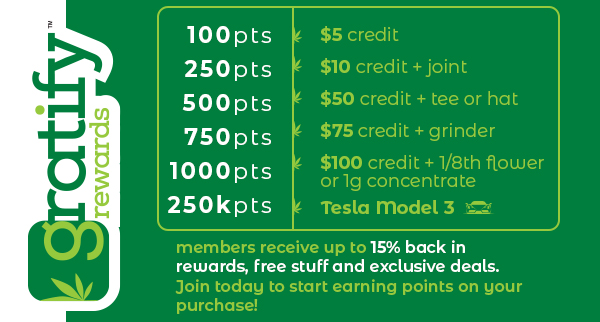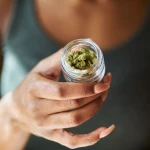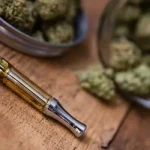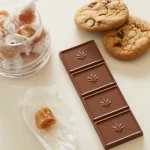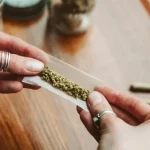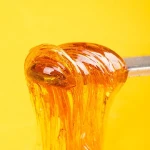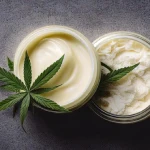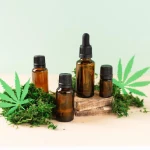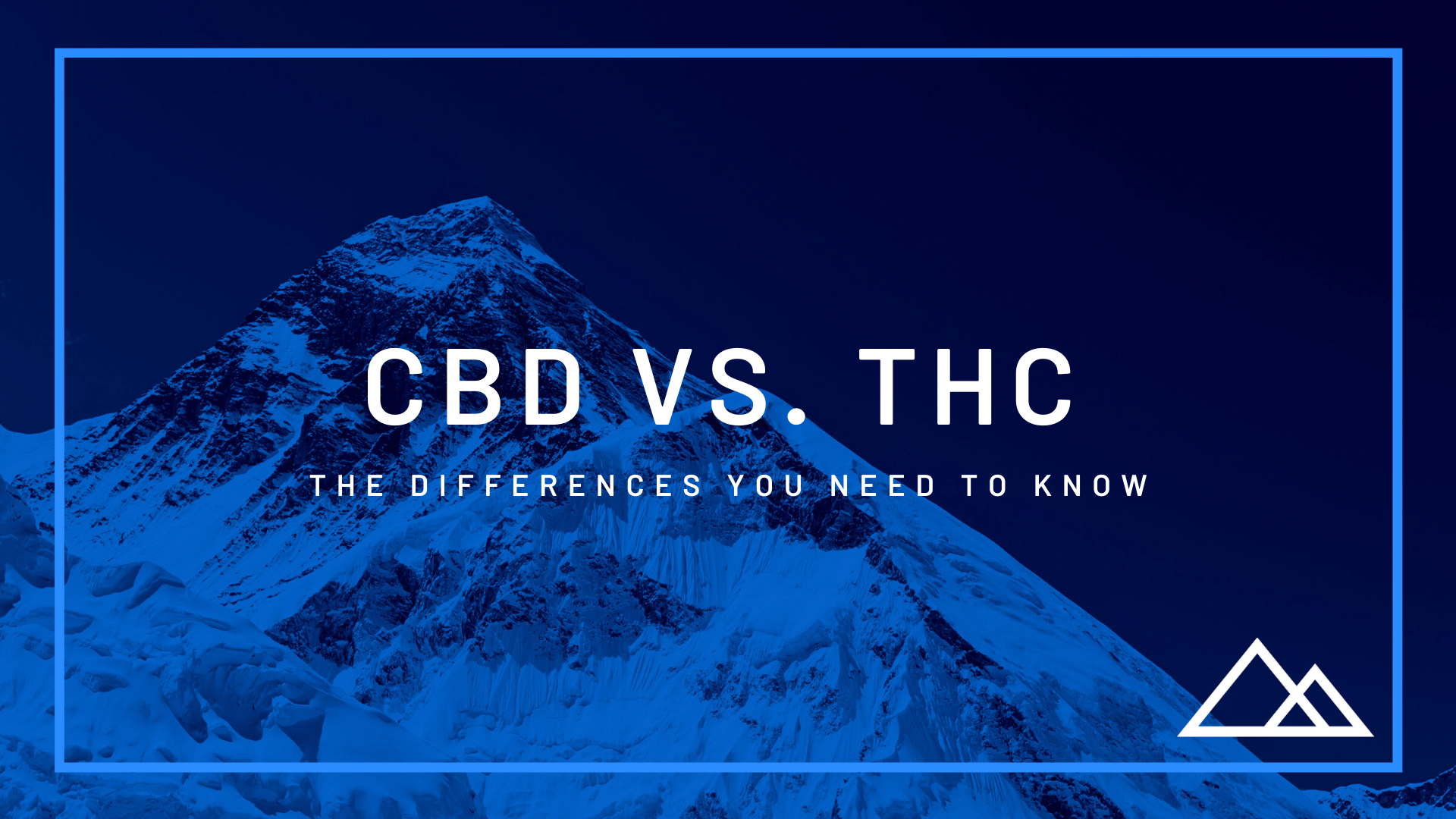It’s official: CBD is mainstream.
It seems to be everywhere these days. There are hemp oils at your favorite massage place, “CBD water” (whatever that is) at your local coffee shop–and even Whole Foods is selling CBD bath bombs now! It’s a brave new world kids, and we’re not mad about it.
If you’re looking for marijuana-laced goods though, that’s a whole different story. Even if you live in a state that has legalized weed, the only place you can access it is at a licensed dispensary.
But isn’t CBD just flower anyways, you ask? Why can I pick up CBD oil at my local CVS, but I can’t get over-the-counter weed gummies?
The difference comes down to one key factor: marijuana products contain THC, which gets you “high”, and CBD does not.
Here’s the deal: while both CBD and THC are both part of the ever-growing (pun intended) world of marijuana, they have a few essential distinctions that can mean the difference between helping your anxiety…and accidentally turning up to work high. BIG difference!
We’re going to talk about key contrasts between hemp and marijuana and, more specifically, CBD and THC. We’ll start with where they both come from, go over why one is legal and the other isn’t, talk the health benefits each have, and finish up with how to get the most out of your CBD or THC use. Sound like a plan?
Let’s break it down!
Here are the main differences between CBD and THC:
Cannabidiol (CBD) and tetrahydrocannabinol (THC) are both natural compounds found in the Cannabis plant, which includes both marijuana and hemp. There are actually dozens of kinds of cannabinoids found in cannabis by researchers, but CBD and THC are by far the most examined and known about.
CBD is a compound found in hemp plants and is best known as CBD/hemp oil in a wide variety of products. To be considered legally hemp (rather than marijuana), a cannabis plant must have less than 0.3% THC content–way too small an amount to get you high. But although it won’t send you to outer space, CBD is thought to have a lot of medical benefits. More on that later!
THC is the cannabinoid that you think of when you hear people talk about marijuana. It is responsible for most of the psychological effects you feel when you smoke bud because it bonds to certain receptors in your brain and can affect your sense of pleasure, memory, thinking, focus, and perception of time.
Marijuana gets you high, and hemp doesn’t–so they must be totally different plants, right?
Wrong! At the base level, CBD and THC are more alike than you would think!
In reality, marijuana and hemp belong to the same genus AND species: Cannabis sativa. They’re more alike than you might think, even if they have such different effects!
CBD and THC are both very similar to your body’s natural endocannabinoids, which means that they can communicate with your cannabinoid receptors in the same way. When they do, neurotransmitters are released. These are the chemicals that convey messages between cells and play a part in your body’s stress responses, ability to sleep, sense of pain and more.
CBD and THC are even more similar when you look close. Very close. Their molecular structure is identical! Both CBD and THC have 30 hydrogen atoms, 21 carbon atoms, and 2 oxygen atoms. They’re not identical twins though; the way the atoms are arranged is just slightly different, which translates to a drastically different effect on your body. Science is cool!
Wait…but if they’re so similar, why is CBD legal when weed that can get you high isn’t?
Great question! To answer it, we’ll have to have a mini-history lesson. Before the 1930s, marijuana actually didn’t have such a negative reputation. Hemp was used in a lot of ways in everyday American life—to make rope, paper, and more—without government restrictions or bad social implications.
This all changed when the Federal Bureau of Narcotics (forerunner of the DEA) was formed in 1930. When prohibition ended in the US, head of department Henry Aslinger needed to find some way to sustain his job and keep his department alive. Taking advantage of spreading racial tensions (marijuana was heavily associated with black Americans and Mexican Americans), Anslinger had a big hand in pushing through the Marijuana Stamp Act in 1937, making marijuana illegal. Steeped in gross stereotypes and hearsay, this was the birthplace of the demonization of bud. Years later, the Controlled Substance Act of 1970 outlawed all cannabis plants and products during the “War on Drugs”.
For much of the 20th century, marijuana was completely illegal no matter what plant it was derived from or what THC content it had. Things didn’t change until the Farm Bill of 2018 when hemp plants were legalized in all 50 states! Thanks to this Bill, hemp-derived CBD had a sudden boom as it became legal for farmers and researchers to work with the hemp plant. That’s why it suddenly appeared everywhere, as if by magic!
What about the THC-heavy marijuana plant though? Is there a happy ending to that story? Believe it or not, marijuana is still categorized as a Schedule 1 drug, right up there with heroin, LSD, and ecstasy. Schedule 1 drugs are defined by the DEA as “drugs with no currently accepted medical use and a high potential for abuse.” Doesn’t seem like the best fit, does it? Perhaps we’ll get to see history being made ourselves someday if they change federal law!
The different effects and uses of CBD vs. THC
Alright, you get the picture: THC gets you high, CBD doesn’t. CBD “good”, THC “bad”. End of story, right?
Not quite! There is so much more to THC and CBD than meets the eye. While generally, people think of CBD for medical use and THC as the stoner’s choice, both CBD and THC have potential health benefits that are still being studied and expanded upon today.
Here are the 6 of the most popular uses for CBD oil:
- Relieve pain
- Help with anxiety and depression
- Help with cancer symptoms, as well as side effects from cancer treatments like nausea and vomiting
- Reduce the appearance of acne
- Ease symptoms of epilepsy and Parkinson’s disease
- Reduce blood pressure and prevent heart damage
Although a lot more research is needed into all of these claims, the possibilities of CBD are exciting!
FUN FACT! Did you know that CBD does not have any known side effects according to the World Health Organization (WHO)? WHO tells us that CBD is safe in surprisingly large quantities, and the only possible side effects are actually from CBD potentially combining with other drugs/medications a person might be taking. With such a safe alternative drug on the market, we hope that someday soon more medical professionals will turn to CBD to help their patients!
People are more familiar with the effects of THC (there are a lot of “stoner comedies” out there). THC can induce a sense of euphoria because it stimulates your brain in the places that are associated with pleasure. Dopamine floods your brain, which gives you a happy and relaxed feeling. Depending on the strain and potency, THC can also heighten your senses and distort your perception of time.
Which option is best for me?
That’s an individual decision, unique to everyone! Here’s a quick guide to choosing CBD or THC:
| Choose CBD if… | Choose THC if... |
| You want to stay clear-headed and functional | You want to feel euphoric and very relaxed |
| You are sensitive to the side effects of THC like paranoia, anxiety, dry mouth, etc. | You are looking to treat lack of appetite or insomnia |
| You need to medicate throughout the day to help with chronic health problems like anxiety, inflammation, or pain | You don’t mind (or are interested in) psychological effects like heightened senses or changes in perception and thinking |
Okay, so you’re interested in CBD or THC…but what’s the best way to take it?
Just like smoking bud, many people smoke or vape CBD to obtain its benefits. This might not be possible for some people with certain medical conditions though, who still want the benefits that CBD can provide!
You can take CBD in the form of…
- Oils and tinctures
These are liquids (usually in oil form) that are infused with CBD and dropped under the tongue in small amounts. Your mouth is full of little blood vessels that help take in the oil quickly. These are a great alternative for people who can’t take pills or smoke!
- Creams and lotions
Plenty of masseuses and more are using CBD-infused topicals to help with muscle relaxation and joint pain. Some people have found success using CBD creams to help with skin afflictions like eczema and psoriasis as well.
- Pills
CBD pills and capsules are more often used as a consistent remedy for seizure conditions and digestive problems. In 2018 the Food and Drug Administration (FDA) approved the first drug with active marijuana-derived ingredients to treat severe forms of epilepsy! The only drawback of the capsule form of CBD is that it can take quite some time to see effects once you ingest the pill.
- Edibles
Edible gummies are very popular as a cheaper, easy, and inconspicuous way to take CBD. One of the big benefits is that you always know the exact dosage that you’re ingesting when you take an edible gummy!
- Vaping
This is the fastest way to feel the effects of CBD: inhaling the vapor of CBD oil. Breathing in the compound absorbs it directly from your lungs into your bloodstream. There is still no consensus on whether or not vaping damages your lungs, though, so be sure to do your research and proceed with caution if you go this route.
Here are just a few of the most common ways to use THC…
- Smoking (duh)
Most commonly people smoke marijuana in a pipe, joint, or bong. Many people prefer to smoke because of the quick onset of effects, but it should be noted that smoking weed has some similar health hazards to smoking cigarettes.
- Vaping
Inhaling the vapor of heated cannabis plant matter is another fast way to feel the effects. Vapes are also more discreet and polite than smoking since they don’t leave a cloud of odor and the vapor disappears quickly.
- Edibles
There are a ton of options for edible marijuana, and many people choose this form because effects last longer than other methods. On the other hand, effects can take a lot longer to kick in, up to 2 hours depending on the person. Because of this a lot of people accidentally take more than they intend to, thinking they aren’t feeling anything at first. Definitely not speaking from personal experience here…
Whether you’re interested in CBD for its medical benefits, or you turn to THC for a good time, both cannabinoids offer different advantages based on the individual. Having a better understanding of where CBD and THC come from, their effects and the many ways to enjoy them will help you decide which one is right for you!
SOURCES:
“Marijuana’s Early History in the United States” https://www.vice.com/en_us/article/xd7d8d/how-marijuana-came-the-united-states-456
“The man behind the marijuana ban for all the wrong reasons” https://www.cbsnews.com/news/harry-anslinger-the-man-behind-the-marijuana-ban/
Drug Enforcement Administration website
https://www.dea.gov/drug-scheduling
“CBD vs. THC: What Are the Differences?” https://www.medicalmarijuanainc.com/cbd-vs-thc/
“Hemp vs Marijuana: The Difference Explained”
https://medium.com/cbd-origin/hemp-vs-marijuana-the-difference-explained-a837c51aa8f7
“Hemp vs. Marijuana: Is There a Difference?” https://www.analyticalcannabis.com/articles/hemp-vs-marijuana-is-there-a-difference-311880
“7 Benefits and Uses of CBD Oil (Plus Side Effects)” https://www.healthline.com/nutrition/cbd-oil-benefits#section1
